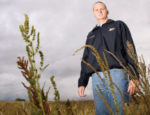There’s No Competing With Long-Term No-Till
After jumping into no-till practices more than 2 decades ago, Iowa no-tiller Randy Caviness has been rewarded with more fertile soils, earlier planting and a stronger balance sheet to compete with neighbors.
Read More













